
A winter walk in the Cedarburg Bog
February 14, 2020 | Topics: Places, Stories
By Eddee Daniel
When is a bog not a bog? Let’s face it, a bog is best known for being a difficult place to be. After all, to be “bogged down” is to be encumbered and slowed to the point of despair. A metaphor for maligned spirits and inescapable sinkholes. Neither liquid nor solid, an actual bog is a soupy, unstable combination of water and earth, uninviting to enter either by boat or on foot. Literature and the arts are replete with images of bogs as malevolent places full of danger and slimy, disgusting creatures. And yet, on a recent January day over 75 people lined up to take a long walk in a bog!
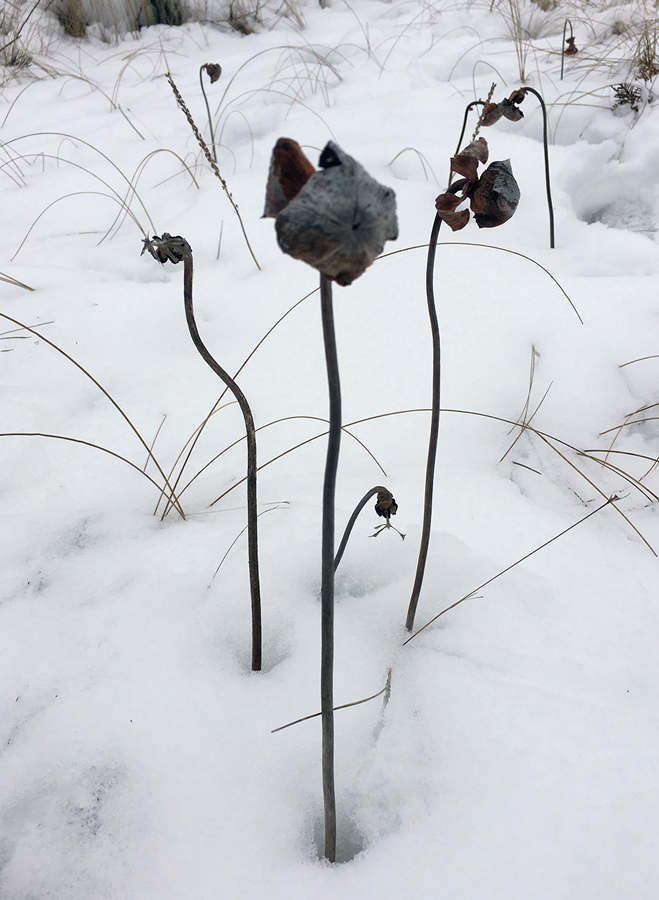
You see, a bog is not a bog when it is frozen. Not soggy, that is. Not difficult, relatively speaking. Although it unquestionably remains a bog, the miracle of ice provides solid footing that one can walk in. And we did. Truly. 75 of us.

Even when frozen the bog is not exactly easy to walk. It remains a wilderness. And because it is unfrozen most of the year there are no well-worn paths through it. Fortunately for the throngs who showed up for this special event, sponsored by the Friends of the Cedarburg Bog, volunteers had been out beforehand to blaze a trail well into the heart of the bog. This was important not only to circumvent thickets of impenetrable vegetation, but also to identify and mark thin spots in the ice cover.

Among the jewels of our region’s wealth of nature, at 2,200 acres Cedarburg Bog State Natural Area is one of the largest, most diverse wetlands in southern Wisconsin. It contains six lakes of varying sizes and depths, a small stream, deep and shallow marshes, sedge communities, shrub-carr communities, swamp hardwoods, large expanses of cedar-tamarack forest, and more. In warm weather, you might see “pitcher plant, bogbean, water horsetail, arrow-grass, orchids, and the insectivorous sundew and bladderwort,” according to the DNR website. The ostentatious orchids are particular crowd pleasers. But, of course, we were not about to see any of them on this hike.
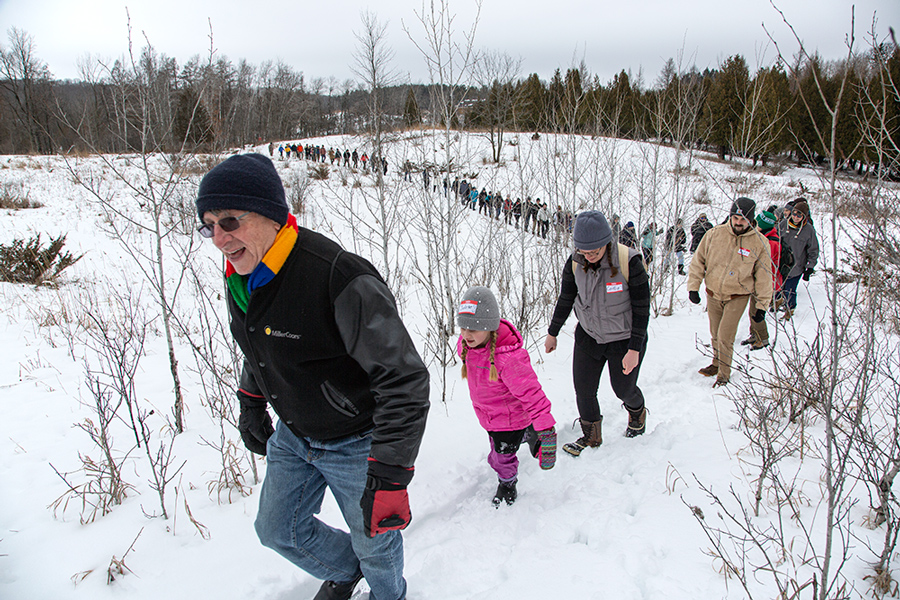
We begin at the UWM Field Station, where we sign a waiver agreeing to the risks of walking in the bog. We are greeted by Jim Reinartz, Director Emeritus of the station, who reiterates the risk and tells us that it is very likely that some among us will punch through the ice and get wet. He then leads us on a march single file overland and over a hill to reach the gated entrance to the bog proper. The bog is jointly owned and administered by the DNR and UWM. Due to its ecological significance and sensitivity, as well as research activities conducted by the Field Station, public access is limited.
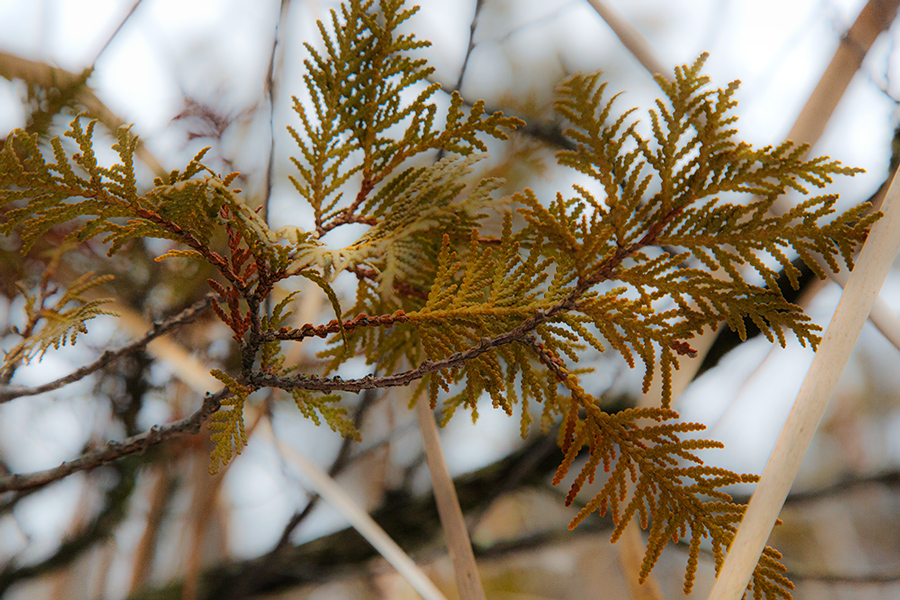
A boardwalk leads us through a dense, shrubby thicket to the stream that cuts through the middle of the bog. As we step off the boardwalk onto the snow-covered ice we are told to stay on the path that’s been established down the center of the stream in order to avoid weak ice around the cattails to either side.
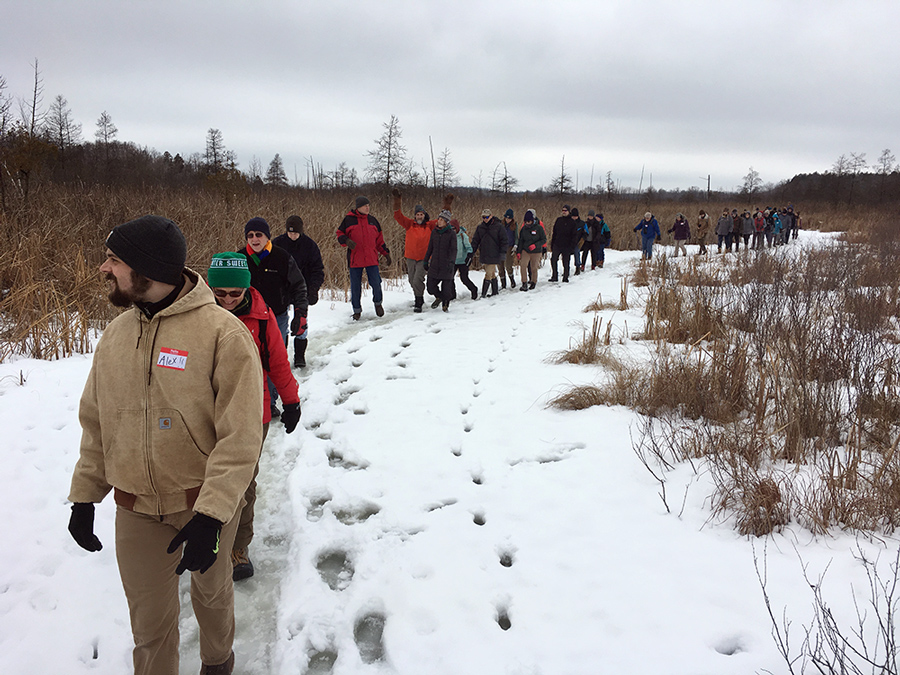
When the identifiable stream peters out the trail that has been pounded into the snow continues on across what appears to be a meadow sparsely filled with tall reeds and small, spiky trees—tamaracks and cedars. Reinartz explains that some of these diminutive cedars may well be nearly a hundred years old. The nutrient-poor environment of the bog keeps them from growing very tall.
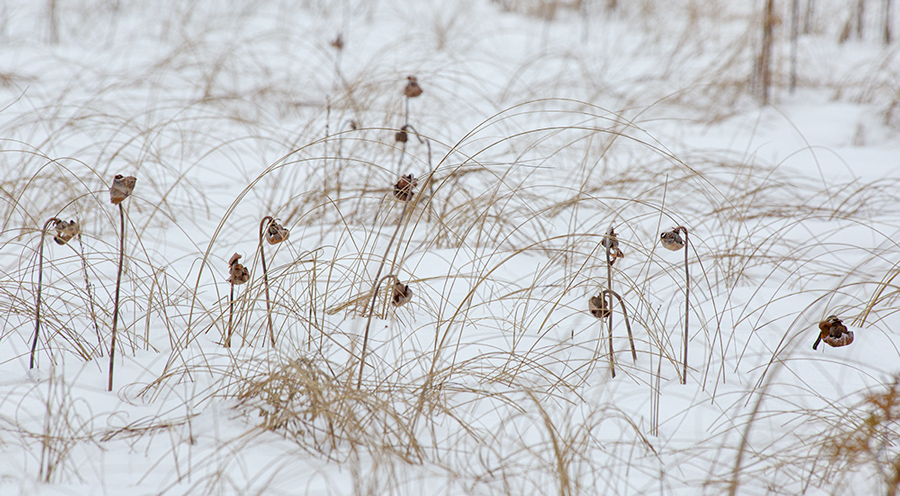
The stems of sedges rise from the snow in lyrical loops. Flower-like seed pods stand among them. These sentinels stand above pitcher plants. The specialized leaves of these carnivorous plants, which are in fact shaped like pitchers to capture unwary insects, are mostly hidden beneath the snow cover. Every now and then we can spot one poking up through. The landscape is a study in minimalism. Wildlife is even scarcer than vegetation. A pair of chickadees flits through the tamaracks. A lone eagle flies high overhead. A pheasant spotted in the upland adjacent to the bog quickly turns its back on us in alarm.
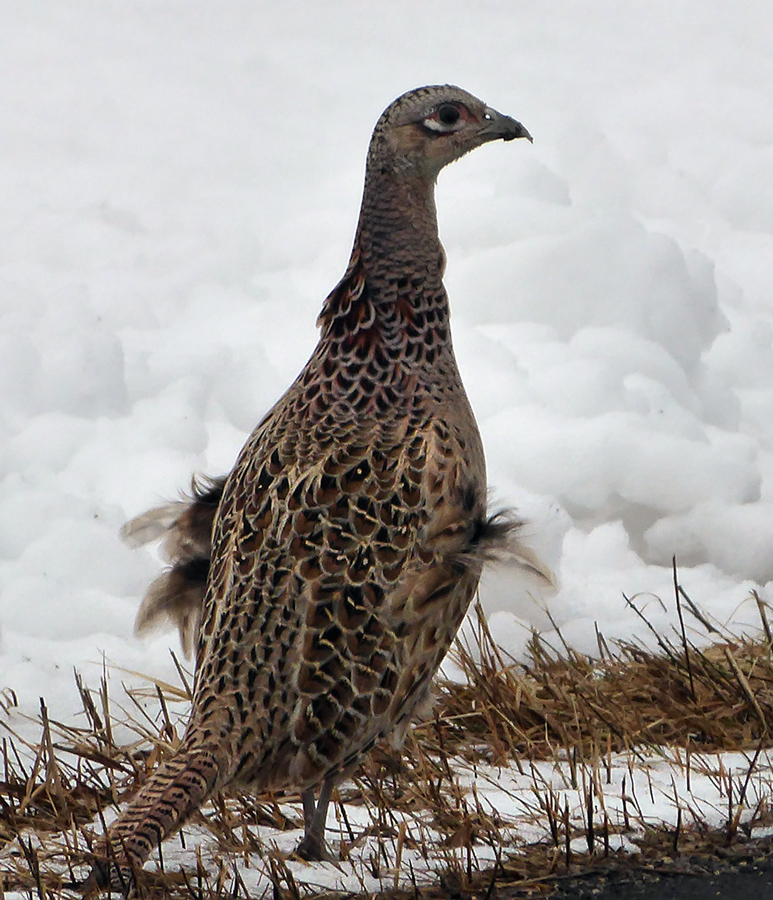
The minimalism increases exponentially as we pour out onto Long Lake. The spiky tree line shrinks almost to nothing, like a heart-rate monitor flat-lining. The vast, white expanse of the lake is mirrored by the vast white expanse of the sky. People are hesitant at first, as their boots squish into several inches of slush. Having tested its thickness with an ice drill, however, Reinartz assures us that “you could drive a car on it.” The slush is the result of water leaking onto the ice from around the edges, he says.
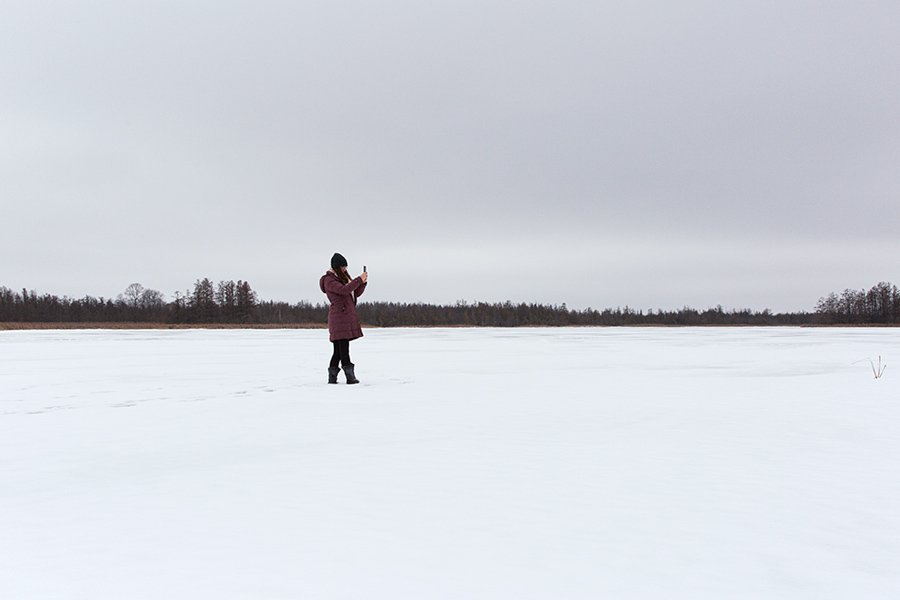
The beauty of this place is subtle. The cedar-tamarack forest goes on and on with little variation. The muted colors range from gray to ochre to olive green. Only the snow lends a measure of brightness and as for that the overcast sky grows steadily gloomier all afternoon. Then I hear Reinartz say that he’s been coming here for over 35 years and “I love it every time.” The smiles and lively chatter among the hikers indicate that they concur. Many of them have made this annual trek before and look forward to it from year to year.
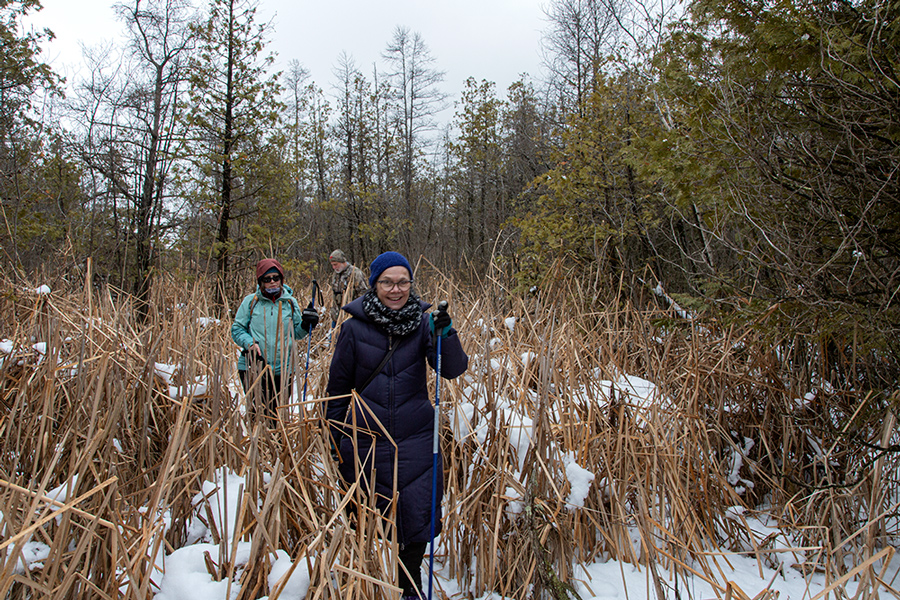
Our hike ends at a second, smaller lake called Donut Lake. Most of the group heads off across the even slushier surface, but I turn back. As I make my way in solitude, out of earshot of the others, nothing stirs. I discover an even more precious and miraculous beauty: the peaceful silence of the wilderness in winter.
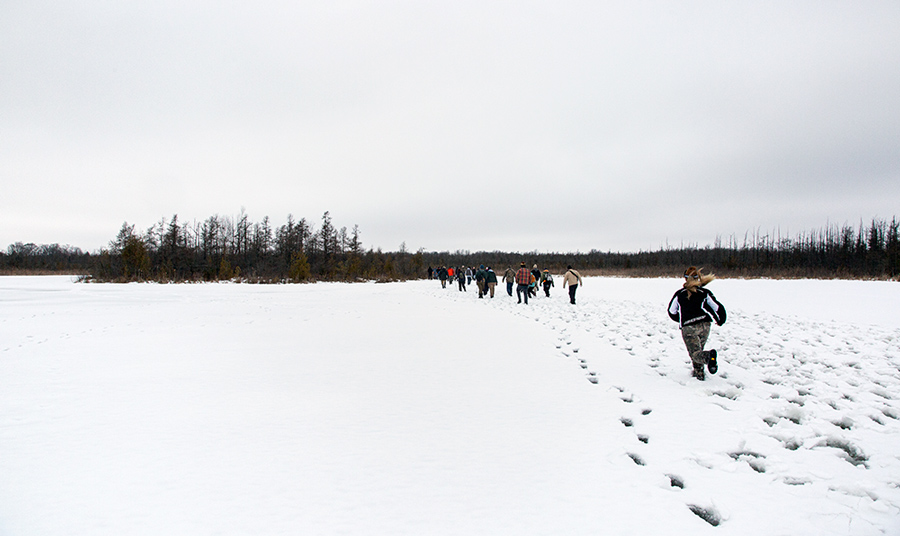

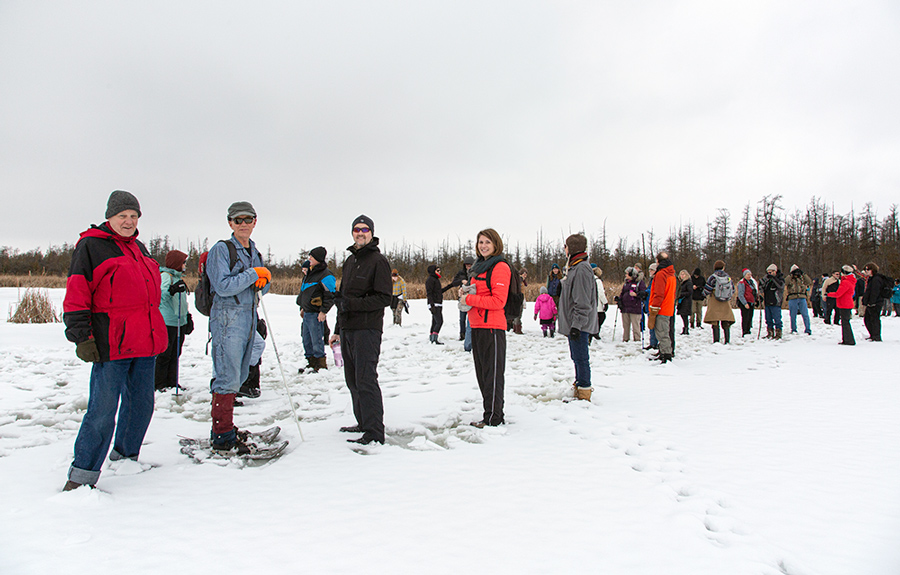
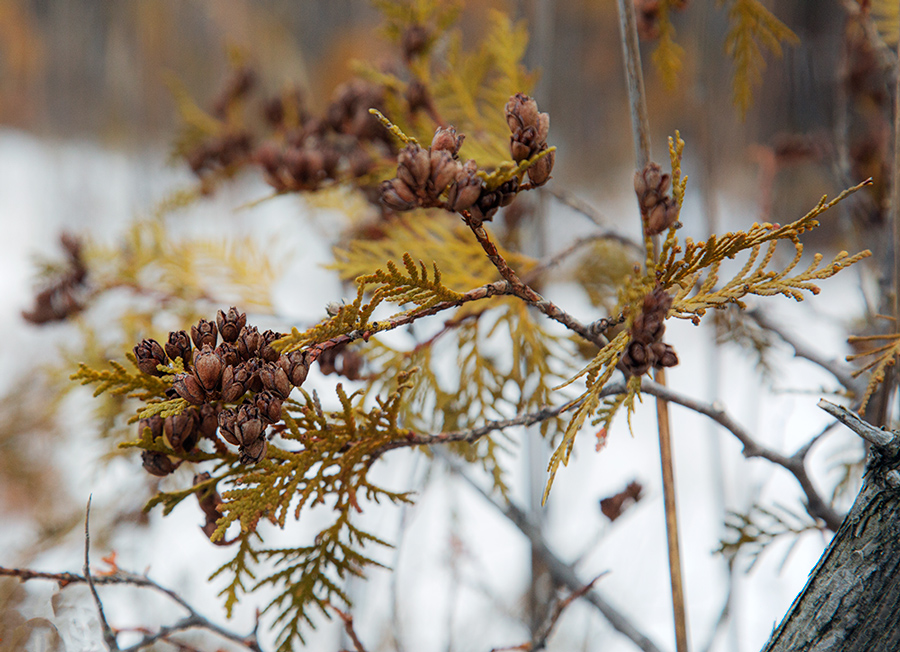
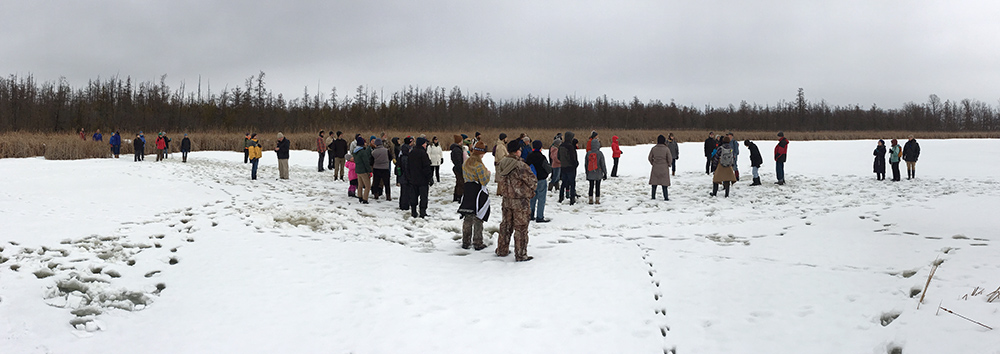

Note 1: While the UWM Field Station property is open only for special events, guided hikes or by permission, there are two DNR public access points on the north and south ends of the bog. North: Public parking on Highway 33 about 2 miles east of County Highway Y. A short trail with board walks leads to a pier at Watts lake. South: Public parking on Cedar Sauk Road, approximately 1 mile west of County Highway Y. A board walk will take you to Mud Lake.
Note 2: Curiously, despite its name, the Cedarburg Bog is neither in Cedarburg (Saukville) nor is it technically a bog. It is a fen. Unlike fens, which have water flowing through them, true bogs get their water only from precipitation. And so we have another answer to the question: A bog is not a bog when it is a fen.
For more information about the bog and future events go to the Friends of the Cedarburg Bog website.
Related story: Butterflies, dragonflies and damselflies at Cedarburg Bog.
All images by the author, except as noted. Eddee Daniel is a board member of Preserve Our Parks and Project Director of A Wealth of Nature.

